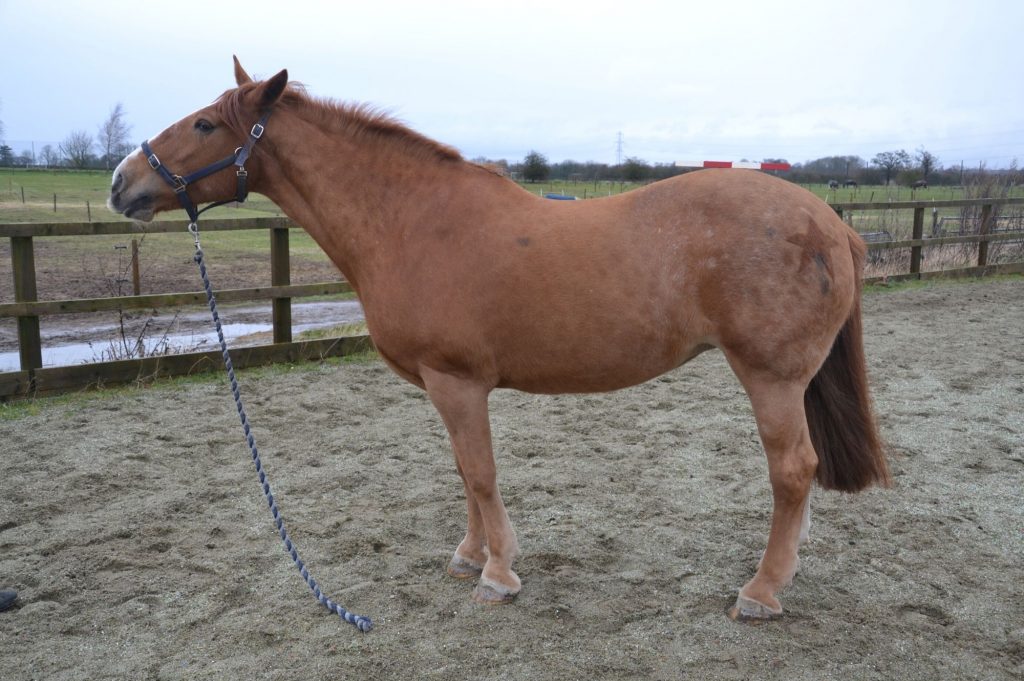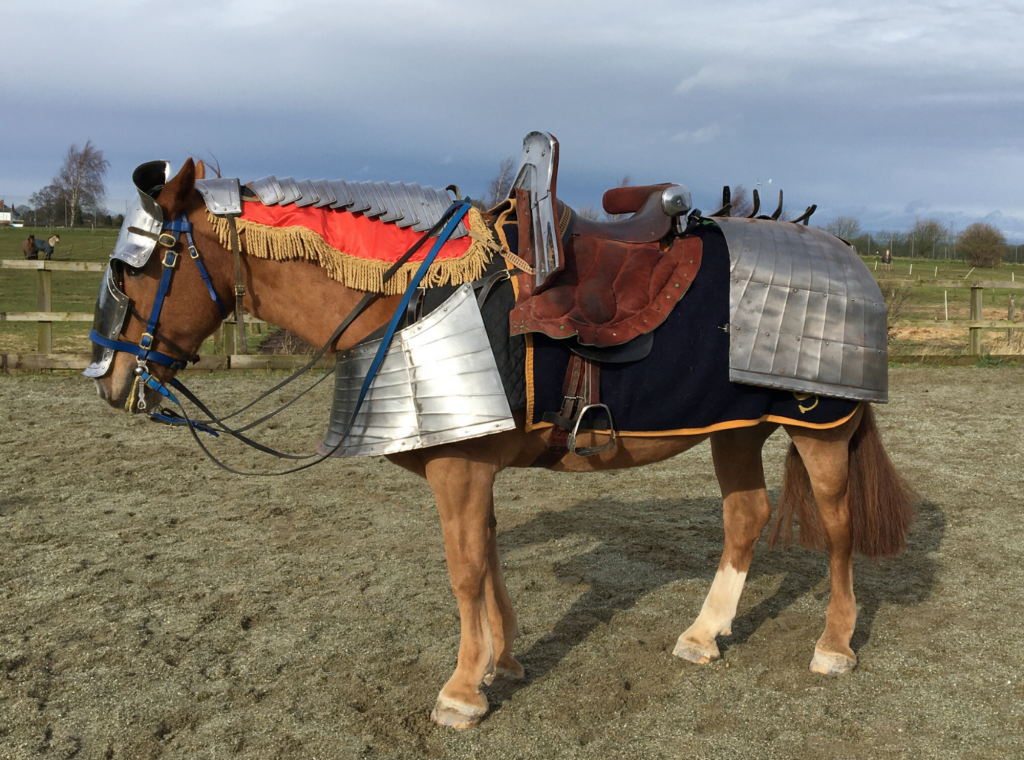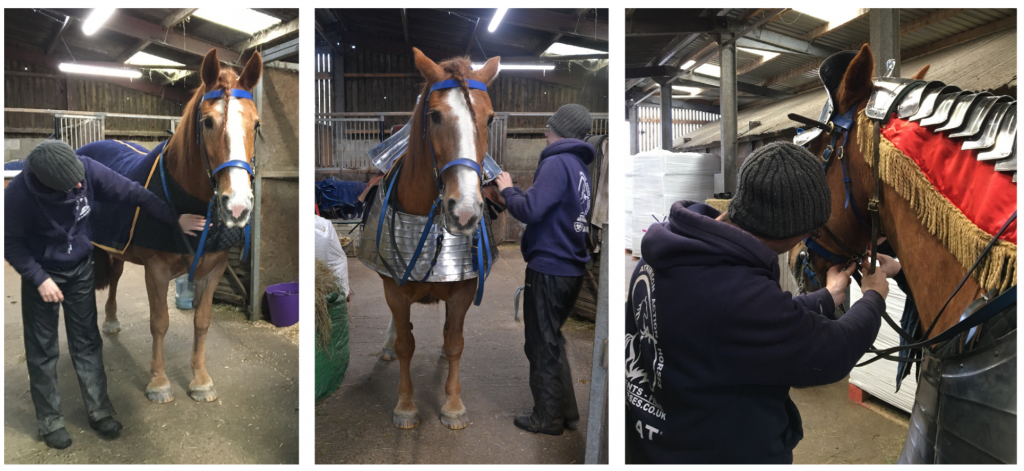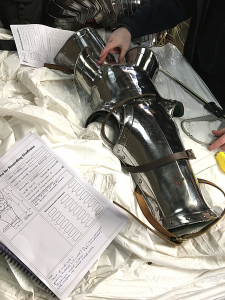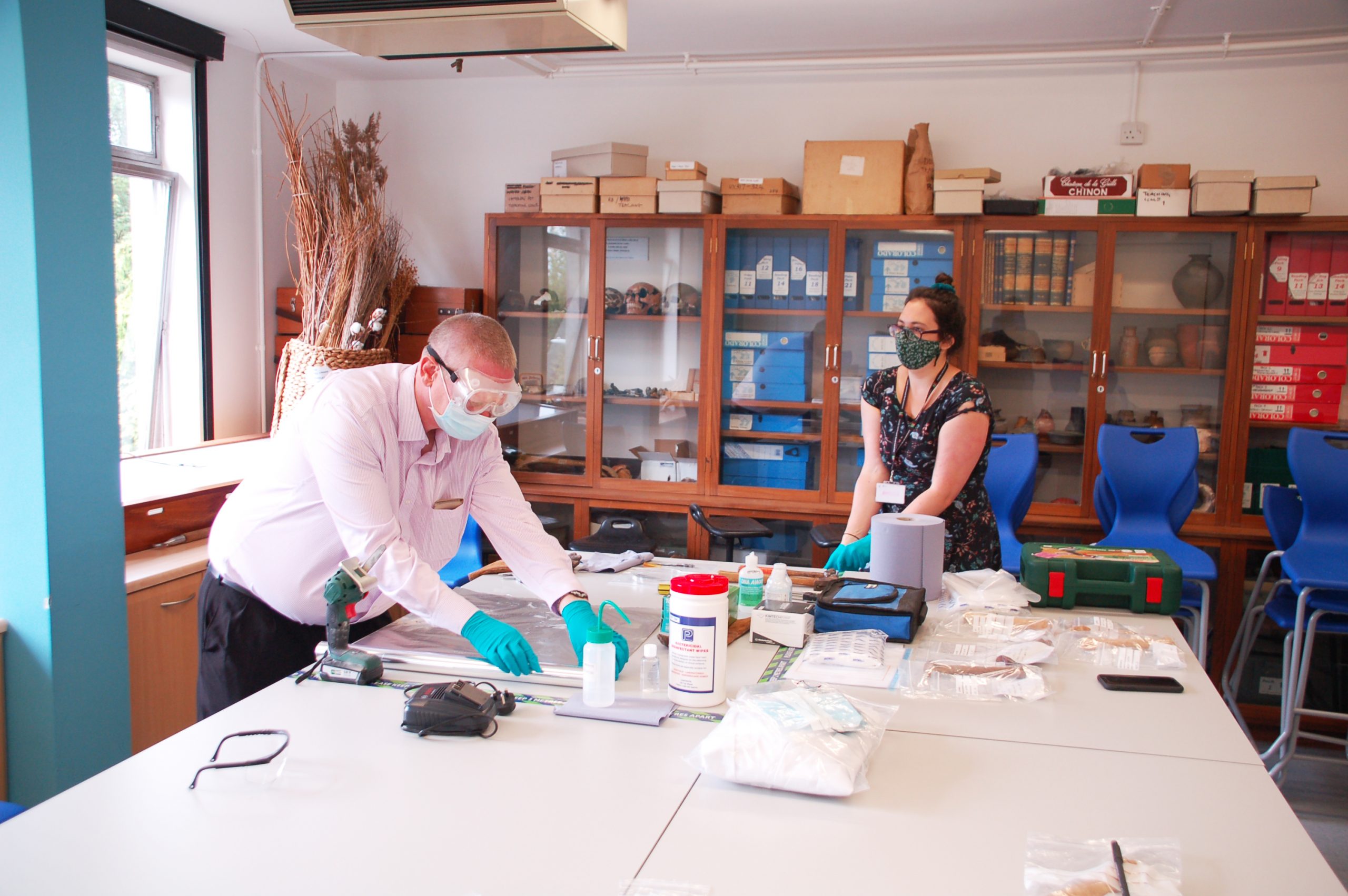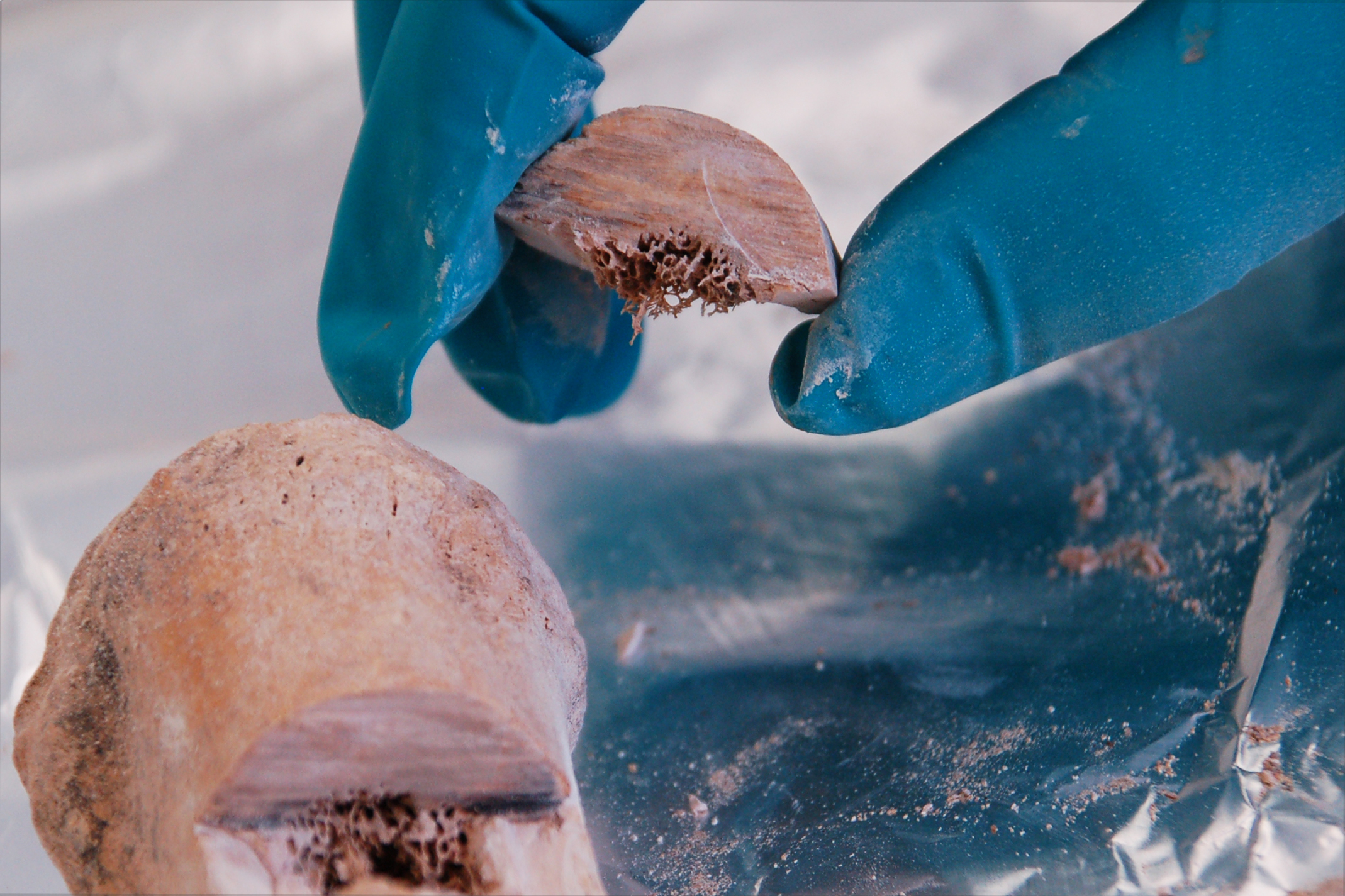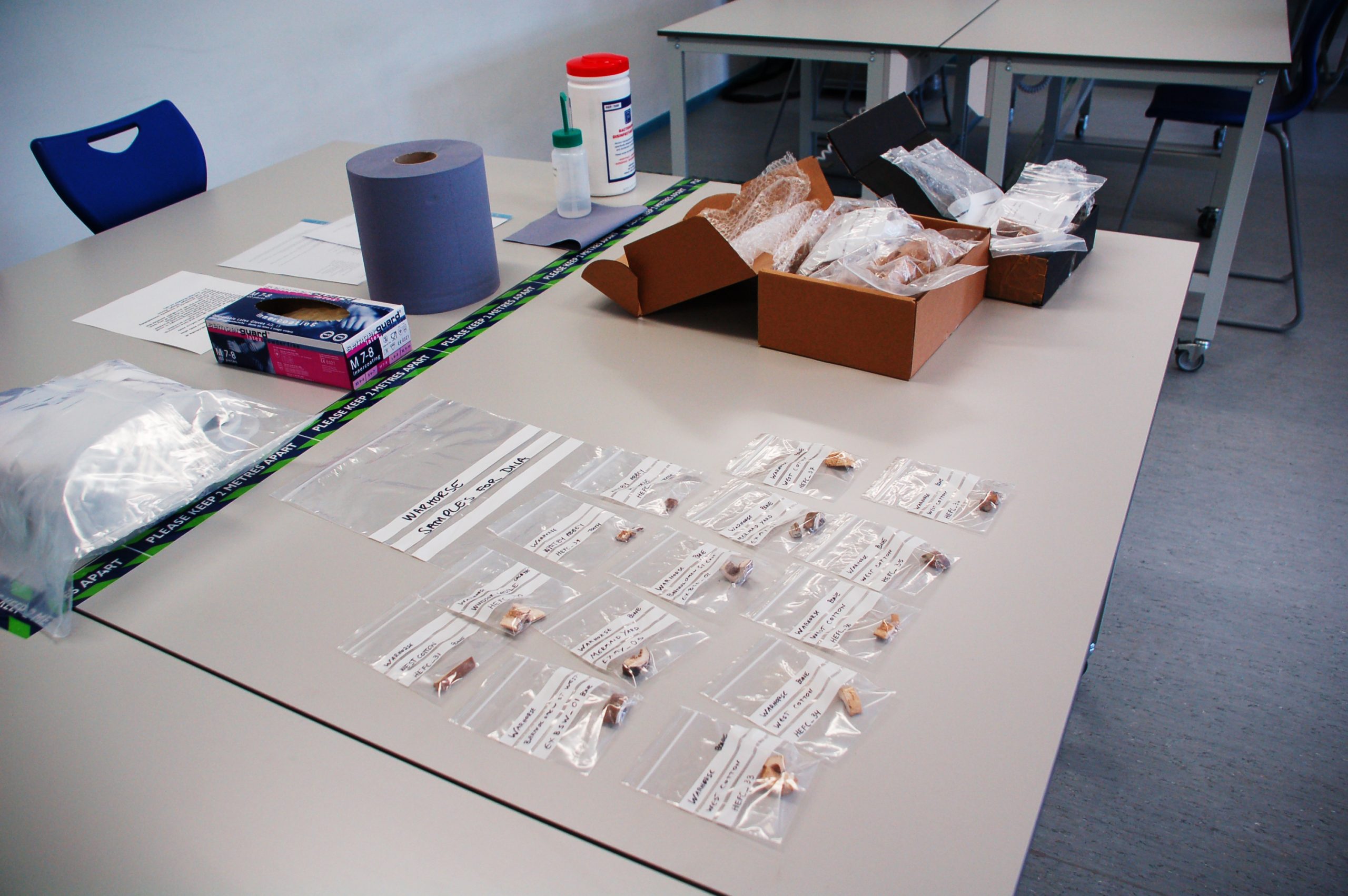Look at a large-scale Ordnance Survey map and it is perhaps surprising to see how many places that exist today owe their name to the presence of horses: Horsham, Horsely, Horsebridge, Studleigh and so on (Fig. 1). One of the aims of Warhorse is to shed more light on what we might call ‘equine landscapes’ of the Middle Ages, and place-names represent an important category of evidence for investigation. Significantly for the project, many of our modern ‘horse’ names have Old English origins and so provide a valuable dataset for analysis.

Fig. 1 Horse place-names – East and West Horsley in Hampshire
Terms that refer to horses appear in both ‘major’ place-names given to settlements and also as more ‘minor’ names often given to fields or farms. Nationally there are literally hundreds of them. Clearly at some point in the past horses were such a feature of these places that they warranted naming as such and so our horse place-names potentially provide us with evidence for the location of specific breeding sites or concentrations of hooves on the ground. So far, so good.
But the interpretation of place-names is complicated by a number of factors. Firstly, there is the difficulty of whether names attest to the commonplace – a name relating to horses might indicate an abundance that made for a distinguishing feature – or the opposite – a scarcity of horses in any given area might mean those places where they did exist were distinctive. Secondly, names are not always straightforward: Maresfield in Sussex derives from Old English mere ‘pool’ rather than denoting the presence of equines. Thirdly, names are often very difficult to date precisely. Clearly a proportion of the horse names found today are relatively recent (think of how many Black Horse pubs there are out there) and the exact date of many minor names, which are probably medieval, but where we would like more precision for the purposes of analysis, are frustratingly elusive. Fortunately, for major place-names, documentary evidence often confirms an early date (Domesday Book is very helpful here) and these cases must reflect in some way horse management in the pre-Conquest period.
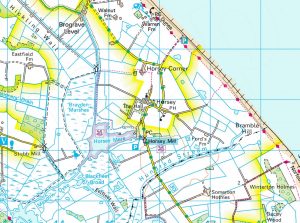
Fig. 2Modern Landscape of Horsey, Norfolk
One such place is Horsey in north east Norfolk on the edge of the Broads (Fig. 2). In 1086 Domesday Book records the name Horseia meaning ‘horse island’ – from the Old English hors ‘horse’ and ēg ‘island’. Go there today and while you will struggle to find it (this is Norfolk remember), there are traces of a gentle hill where the church now stands and from which the ‘island’ part of the name was presumably taken. In the late eleventh century this island would have stood at the mouth of what is now the river Thurne and today’s semi-drained farmland would have been a wide expanse of estuarine salt marsh and grazing, something readily appreciable today even if the ‘island’ is not (Fig. 3).
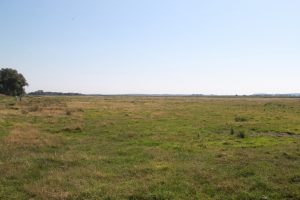
Fig. 3 What is now drained farmland would have been wetland grazing in the eleventh century.
So why ‘horse’ island? As the project is discovering, there is some evidence that the place name hors, denoted feral or semi-feral herds, and here it is interesting that Domesday Book also records large numbers of what it calls ‘wild mares’ in neighbouring manors. Such feral herds were presumably exploited much in the way that they are today, perhaps with young animals being drawn off on a cyclical basis for breaking in and use elsewhere.
So – should we be imagining a feral horse population around Horsey in the Anglo-Saxon period grazing on the extensive wetlands, perhaps analogous to Camargue horses in modern France? Perhaps the Norfolk Horsey was not unique as ‘horse islands’ are also found in the Somerset and Pevensey Levels, the Peterborough Fens, on the Essex coast and what is now Portsmouth harbour – once all very similar environments. And would the horse living in these landscapes had different characteristics to those grazing in different surroundings, such as upland Exmoor and Dartmoor, which Domesday Book shows was clearing taking place? Warhorse is currently exploring these and many other issues and it will be fascinating to see if the zooarchaeology and material culture strands of the project can help us to further refine our understanding of these early horse landscapes. It’s all in the name (Fig. 4).
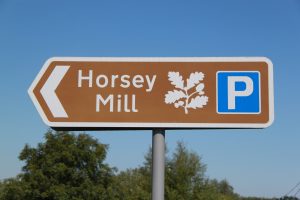
Fig. 4 A dim echo of a horse landscape of the Anglo-Saxon period? The clue is in the name…
